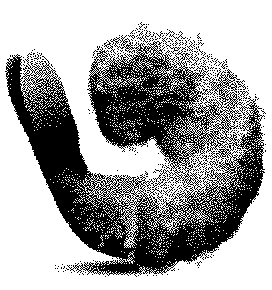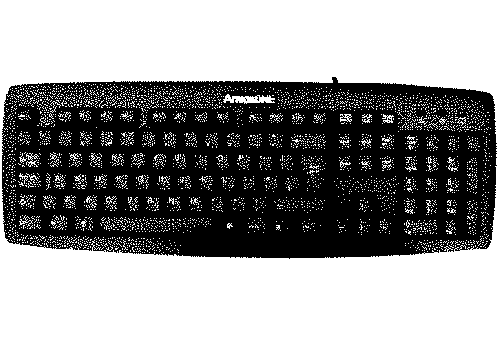
Thanks to Paddy Johnson for GIF of the Day coverage for the GIF above, originally posted here. Here's what she wrote:
I’ve never bought into the popular art world belief that an in between state is somehow implicitly good, but this GIF by Tom Moody and deaniebabie makes a good argument for the value of that state. It’s not that the morphing from ring to shrimp necessarily makes a greater statement, but as a viewer, you’re inclined to look a little harder as the identifiable shape disintegrates and reforms.
In this case, there’s a real beauty to the simplicity of movement and grace to the shifting of states, so the loop has the same kind of satisfaction as watching a metronome. It’s surprisingly mesmerizing.
I replied via Disqus:
Thanks for the post. The color version of this (as I recall from its momentary appearance on dump.fm, when deaniebabie posted it) had vaguely greenish colors and the "tween" frames were somewhat wispy. Converting it to this black and white dot rendering gave the whole more solidity and conviction. One reason it's so engaging is the way the ellipses twist in mid-morph. You would think the circular shape of the ring would follow the curve of the shrimp, but in just a few frames it becomes a kind of Moebius strip. In a way it convinces you that almost any two shapes can be morphed. The algorithm has powers of cleverness that seem greater than ours.
Both of us skirted an issue someone on dump.fm raised, the most basic content-level kind of question: what's the symbolic connection of the shrimp and the ring (suggestive of a diamond wedding ring)? You could ask the maker of the original morph (it may or may not be deaniebabie -- aka Dean Schneider -- I'm not finding that GIF on his site). You could say it's Dada/absurdist or computer/random connection with no inherent meaning. Or you could draw your own connection, such as "marriage and seafood both stink after the first three days." Have fun.

